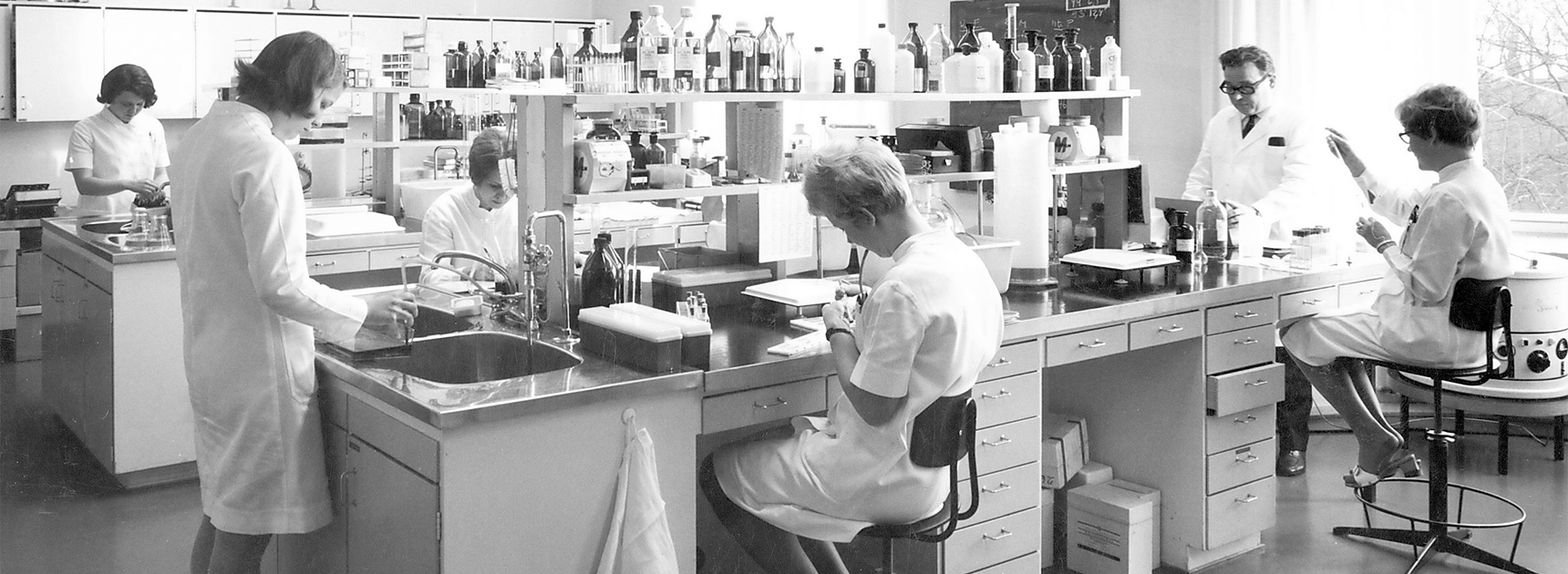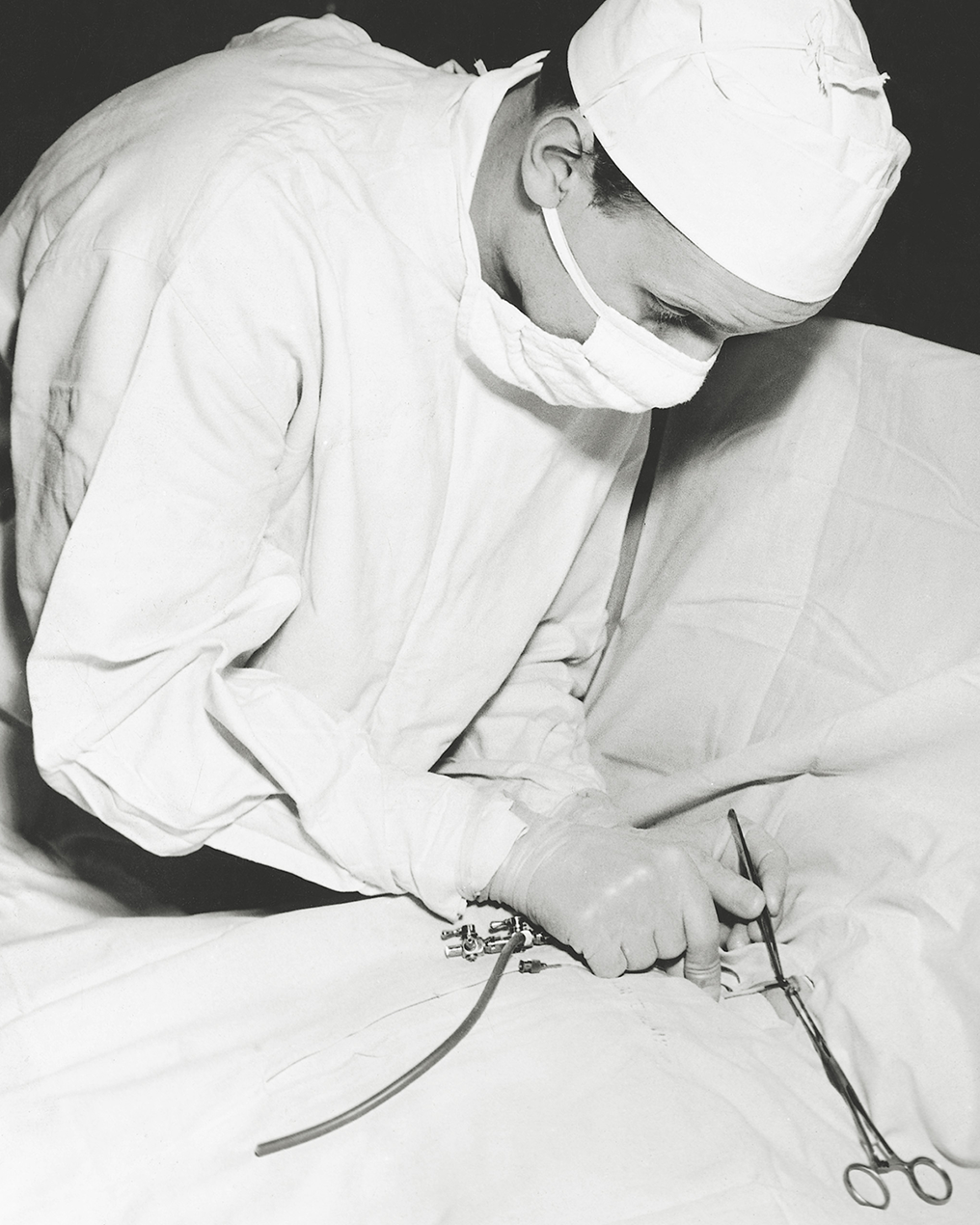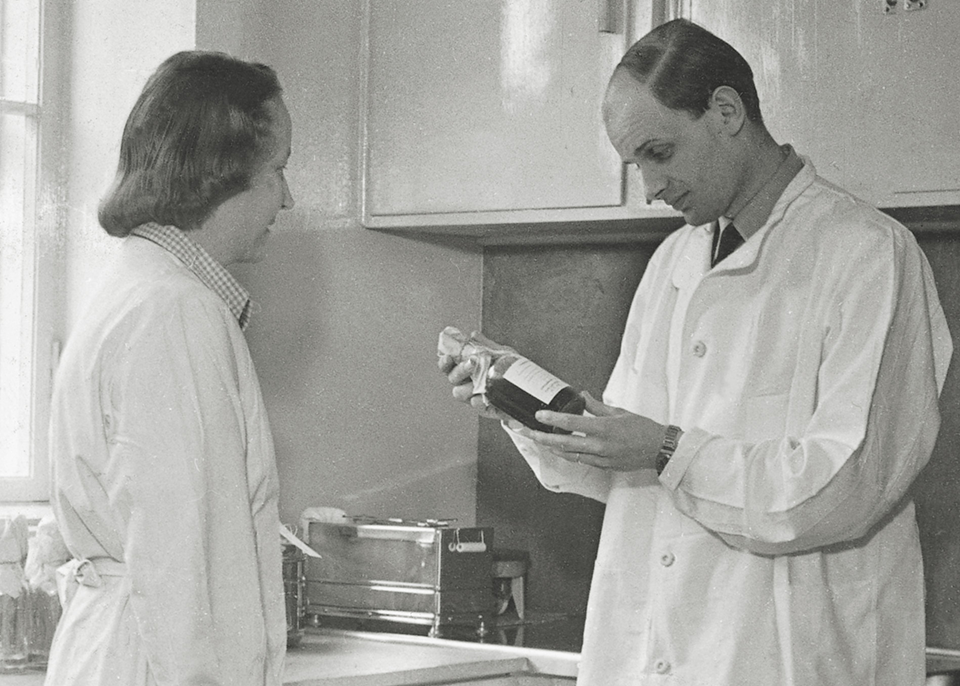Research for the benefit of patients
The Blood Service plays a role in the treatment of patients, and one task in this is the scientific research. Research has contributed significantly to the development of the products and methods used in the treatments. The research activities of the Blood Service date back to the 1950s.

Harri Nevanlinna as a pioneer
Professor Harri Nevanlinna, the first director of the Blood Service, was not only a pioneer in Finland’s blood supply services, but also a researcher. The first doctoral dissertation completed at the Blood Service is from 1953, Professor Nevanlinna’s study of Rh immunisation during pregnancy, i.e. the so-called Rhesus disease in which the blood group antibodies of the mother giving birth breaks down the red blood cells of the foetus, causing anaemia in the foetus.
Thanks to Nevanlinna, and subsequent other researchers of Rh immunisation, Finland has been able to develop the prevention and treatment of Rhesus disease to a high level. The Blood Service still tests all pregnant women to ensure the health of the mother and the foetus, and today, disabilities due to Rh immunisation are very rare.

Research and laboratories developed hand in hand
In the late 1950s and in the 1960s, the Blood Service began to attract doctors interested in research, and laboratories were developed with the support of research. Blood group serology, blood coagulation factors, and blood transfusion and tissue graft compatibility testing became the principal areas of interest.
A laboratory was established for all these research areas to carry out studies required by hospitals to support patient care, alongside the scientific research work. Blood Service laboratories developed into national reference laboratories with special expertise in the field.
In the 1960s, principal areas of doctoral research included studies focused on blood clotting and other plasma-related proteins which laid the groundwork for the treatment of haemophilia in particular, with products developed by the Blood Service. Through research, the quality of life of Finnish haemophilia patients was significantly improved over many years, before the development of the modern, effective medicines. Based on the research conducted, plasma treatment methods were also patented. The Blood Service was also the world’s leading producer of natural interferon before recombinant products were produced.
Research on tissue compatibility became a growing area of research starting in the 1970s. A good fit of the tissue type between the donor and patient is essential for the success of stem cell and organ transplantation. However, the current HLA tissue type determination only explains some of the risks of transplantation, so there is still a clear clinical need to further develop tissue compatibility. Tissue types are also relevant to the hereditary predisposition to many diseases.
The Blood Service laboratory continues to perform the tissue typing for all organ transplants and stem cell transplants. In blood group serology, which is important for blood transfusions, the Blood Service laboratory also continues to serve the health care services on a national level. The laboratory testing of coagulation factors, on the other hand, was transferred from the Blood Service to Fimlab Laboratories in 2019.
In the 21st century, systematic research began on the health effects of regular blood donation. For example, based on the research results obtained, appropriate donation intervals have been redefined in order to secure the donor’s iron stores. A doctoral dissertation in the field of sociology is also being conducted regarding the views of blood donors on the research use of donated blood.

Research supports the development of new treatments and products
Blood Service is not only involved in the development of established cell therapies, such as blood transfusions and stem cell and organ transplants, but also in the development of next-generation, i.e. third-generation cell therapies.
A great example of new cell therapies is the study of CAR T-cells used in cancer treatments. CAR T-cells are a promising new treatment for cancers. CAR T-cells are the patient’s own T lymphocyte cells that are being modified to actively destroy cancer cells. A doctoral dissertation on the topic was completed at the end of 2023.
The Blood Service studies and develops new products from donated blood. Blood-cell-derived vesicles (extracellular vesicles) are the outer membrane-bound vesicles of cells that can be used in medical research, for example, to identify diseases and develop medicines. In both these cases, the Blood Service is active in product development work, and there have already been two doctoral dissertations conducted on this topic.
Research to support blood transfusions and tissue therapies will continue alongside the new research areas. The optimal use of blood products in both surgery and the treatment of massive haemorrhage has been studied in several doctoral dissertations.
The Blood Service was founded in 1948. It has become an important research institute in its field. Currently, the Blood Service spends approximately EUR 2 million annually in scientific research. The Blood Service also has a Research Fund through which it supports research activities in its field in Finland.